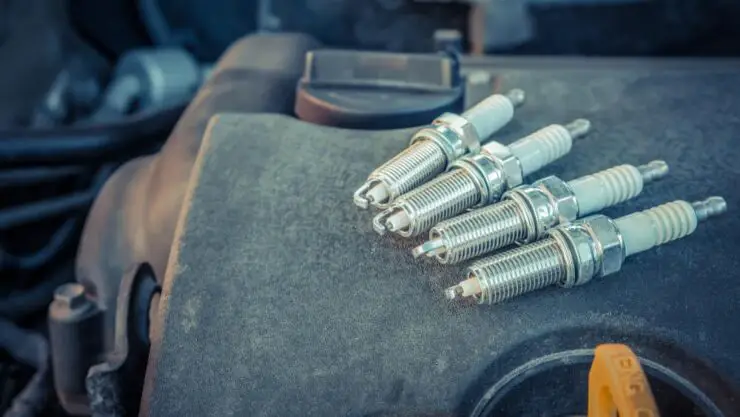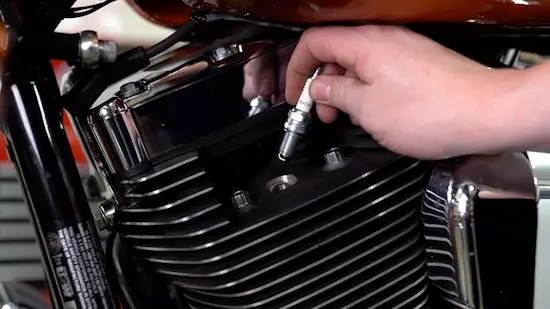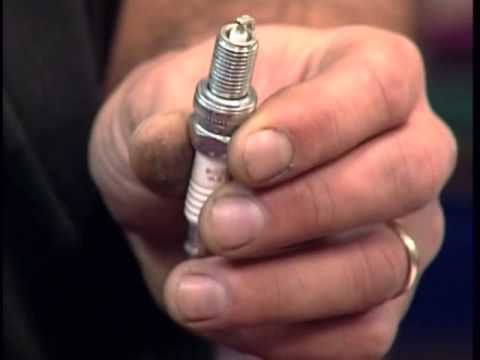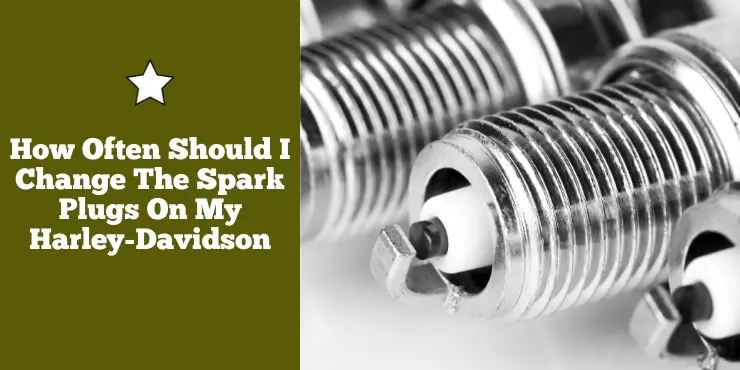If you’re a proud owner of a Harley-Davidson motorcycle, chances are you love hitting the open road, feeling the wind against your face as you cruise along. And to keep your ride running smoothly, there are certain maintenance tasks you’ll need to take care of, one of which is changing your spark plugs. Now, you might be wondering, How often should I change the spark plugs on my Harley-Davidson?
Change Harley-Davidson spark plugs every 15,000-20,000 miles, or as specified in your model’s maintenance schedule, to maintain engine performance.
In this article, we’ll dive into the importance of spark plug maintenance, factors to consider when determining the frequency of replacement, and helpful tips to ensure optimal performance for your beloved Harley-Davidson. So, buckle up, because we’re about to explore the world of spark plugs and motorcycles!
Significance of spark plugs in Harley-Davidson engines
Harley-Davidson bikes are renowned for their iconic style, powerful engines, and distinctive rumble. Behind the scenes of this American bike lies a crucial component that plays a pivotal role in the engine’s performance – the spark plug.
>>> Click here to read our review of the Best Harley-Davidson Spark Plugs <<<
Before finding out their role in Harley-Davidson engines, you should still know a thing or two about the basics of spark plugs. A spark plug is a small but essential component in an internal combustion engine. Its primary function would be to ignite the air-fuel mixture within the engine’s cylinders, setting off a controlled explosion that drives the piston down and turns the crankshaft, ultimately propelling the motorcycle forward.
A spark plug consists of several key components including –
- Shell – The outer casing of the spark plug, which threads into the engine cylinder head
- Insulator – A ceramic or porcelain insulator that isolates the central electrode from the spark plug shell
- Central electrode – A metal conductor, typically made using copper or a copper alloy, extends into the combustion chamber
- Ground electrode – A metal conductor, also known as the side electrode, is positioned opposite the metal electrode
- Gap – The small air gap between the central and ground electrodes where the spark occurs
The process of ignition starts when the engine’s piston compressors the air-fuel mixture into the combustion chamber. At the precise moment, the spark plug will be triggered. An electrical current from the bike’s ignition system will flow through the central electrode to the ground electrode. This current will create a high-voltage potential difference between the two electrodes.
As the voltage difference reaches a critical point, it will ionize the air-fuel mixture in the spark plug gap. This ionization will create a conductive path, allowing electricity to flow across the gap and generating a spark.
The spark plug produced by the spark plug will serve as the ignition source for the compressed air-fuel mixture. This spark will ignite the mixture, causing a rapid combustion process.
In Harley-Davidson motorcycle engines, spark plugs serve a number of vital functions. Here is the significance of spark plugs in Harley-Davidson engines –
#1. Ignition timing
The precise timing of the spark plug’s ignition is important for the engine’s performance. Harley-Davidson engineers calibrate the ignition system to ensure that the spark plug fires at the optimal moment during the engine’s four-stroke cycle (intake, compression, power, and exhaust). Proper timing is important for maximizing power output and fuel efficiency.
#2. Combustion efficiency
Spark plugs play a key role in promoting efficient combustion. By creating a consistent and controlled spark, they’ll help ensure that the air-fuel mixture burns completely and evenly. This efficient combustion results in smoother operation, reduced emissions, and improved fuel economy.
#3. Heat dissipation
Spark plugs are designed for managing the heat generated during combustion. The materials used in their construction, such as the ceramic insulator and metal electrodes, are carefully selected to withstand high temperatures without fouling or overheating. Harley-Davidson considers factors like engine displacement and compression ratio when choosing spark plug heat ranges for optimizing performance.
#4. Maintenance and inspection
Regular inspection and maintenance of spark plugs are important to keep a Harley-Davidson bike running smoothly. Over time, spark plugs can become worn or fouled, leading to poor ignition and decreased performance. Replacing spark plugs at recommended intervals is crucial to ensure reliable ignition and optimal engine performance.

How often should I change the spark plugs on my Harley-Davidson?
Harley-Davidson riders love the thrill and power that comes with riding a Harley-Davidson bike. To keep your bike running smoothly and performing at its best, it is important to pay close attention to regular maintenance tasks, including changing the spark plugs on time. Spark plugs play a vital role in the ignition process of your motorcycle’s engine. Changing it on time will help your bike run at its best. Now, you might be wondering how often should I change the spark plugs on my Harley-Davidson.
Typically, it is recommended that the spark plugs must be inspected regularly and, if necessary, change the spark plugs once every 10,000 to 20,000 miles. However, this can vary depending on your specific model and riding conditions. You must check the owner’s manual of your bike for the manufacturer’s recommendations.
To help you know how often to change the spark plugs, there are certain things to keep in mind. Here are some of the indicators that will let you know it is time to change the spark plugs on your Harley-Davidson bike –
#1. Decreased fuel efficiency
One of the first signs that your Harley-Davidson bike’s spark plugs might need replacement is a noticeable drop in fuel efficiency. If you find yourself making more frequent trips to the gas station despite the same routes, it is time to inspect the spark plugs. Worn or fouled spark plugs can result in incomplete combustion, wasting fuel and reducing mileage.
#2. Difficulty starting the bike
Difficulty starting your Harley-Davidson bike, especially when the engine is cold, can be an indicator of spark plug issues. Spark plugs are responsible for initiating the combustion process and if they aren’t doing their job effectively, you might experience slow or rough starts. This can be especially evident during chilly mornings or after your motorcycle has been sitting idle for an extended period.
#3. Engine misfires
Engine misfires occur when the spark plugs fail to ignite the air-fuel mixture consistently. You will feel this as a sudden loss of power or a hiccup in the engine’s smoothness. Misfires will not only reduce performance but also increase the risk of damage to other engine components. If you notice frequent engine misfires, it is an indication that your spark plugs are overdue for replacement.
#4. Rough idling
A healthy Harley-Davidson engine needs to idle smoothly. If your motorcycle’s engine dies roughly, with noticeable vibrations or irregular RPM fluctuations, it might be time to inspect the spark plugs. Worn or fouled spark plugs can disrupt the engine’s idle, making it less stable and affecting the overall riding experience.
#5. Poor acceleration and power loss
Spark plugs play a major role in generating the power needed for acceleration and maintaining consistent speed. If your bike feels sluggish, lacks the usual punch during acceleration, or struggles to reach higher speeds, deteriorating spark plugs might be the culprit. Replacing them will help restore your motorcycle’s performance and responsiveness.
#6. Increased emissions
Another important aspect that you should consider is the environmental impact. Spark plug health will directly affect emissions. If your motorcycle’s spark plugs are in poor condition, it might produce higher levels of harmful emissions. Regular spark plug maintenance will help reduce your bike’s environmental footprint.
Factors that influence the lifespan of spark plugs in a Harley-Davidson
Spark plugs might seem like small and inconspicuous components in your Harley-Davidson bike’s engine but they play a key role in ensuring the smooth operation and performance of your motorcycle. Understanding the factors that influence the lifespan of spark plugs is important to maintain your bike is in top condition. Here are some of the factors that impact the longevity of spark plugs in your Harley-Davidson bike.
Riding conditions
The riding conditions you expose your bike to can significantly affect the lifespan of your spark plugs. Frequently riding in harsh conditions, such as dusty or sandy environments, can accelerate the fouling and wear of spark plugs. Similarly, riding in extreme temperatures, be it excessively hot or cold, can greatly impact spark plug performance. In such conditions, it is advised that you should inspect and replace the spark plugs more frequently.
Fuel quality
The quality of fuel you are using in your Harley-Davidson bike can also impact spark plug lifespan. Low-quality or contaminated fuel can leave deposits on the spark plugs, resulting in fouling and reduced performance. It is important to use high-quality fuel from reputable sources to minimize the risk of spark plug issues.
Engine maintenance
Regular engine maintenance, such as oil changes and oil filter changes, plays a major role in spark plug longevity. A clean air filter will ensure that the air-fuel mixture entering the combustion chamber is free from any debris and contaminants, reducing the risk of fouling. Properly maintained engine oil will help lubricate and cool the engine, indirectly benefiting the spark plugs.
Riding style
Your riding style can also have an influence on the lifespan of your spark plug. Aggressive riding with frequent acceleration and deceleration can put more strain on the engine and the spark plugs. If you frequently push your bike to its limits, you might have to replace spark plugs more often.
Spark plug material and heat range
Harley-Davidson offers a wide variety of spark plug options, each with its own material and heat range. The heat range of a spark plug refers to its ability to dissipate heat. Choosing the right spark plug with the appropriate heat range for the engine’s specific needs is important. Using the wrong spark plugs, especially those with the incorrect heat range, can end up resulting in overheating or fouling and significantly reducing their lifespan.

Riding frequency and mileage
The frequency of your rides and the overall mileage on your bike can impact spark plug lifespan. Regular use can help keep the spark plugs cleaner by preventing deposits from accumulating. Conversely, if your motorcycle sits unused for extended periods, spark plugs deteriorate over time, resulting in issues like fouling or corrosion.
Troubleshoot common issues with spark plugs on Harley-Davidson
Spark plugs are responsible for igniting the air-fuel mixture and powering your Harley-Davidson bike. However, like all components of a bike, spark plugs tend to experience different issues from time to time. You will need to resolve these issues as soon as possible to ensure your bike keeps functioning at its best. Here are some of the common issues with spark plugs in Harley-Davidson bikes and how to troubleshoot them.
Fouling
Fouling occurs when the spark plugs become coated with oil, carbon deposits, or other contaminants. This can end up disrupting the spark and hinder proper combustion. If you notice fouling in spark plugs, here are the steps you need to follow to troubleshoot this issue –
- Replace the spark plug with a new one
- Check the engine for issues that might be causing fouling, such as excessive oil consumption or running too rich
Overheating
Overheated spark plugs can often result from an improper heat range or running the engine at high speeds for extended periods. Here is what you should do if you want to troubleshoot heating in the spark plugs –
- Choose spark plugs with the correct heat range for your Harley
- Avoid prolonged high-speed riding, especially in hot weather
- Make sure that your engine is properly tuned for optimal air-fuel mixture
Worn electrodes
Over time, the electrodes on spark plugs can wear down, reducing their ability to produce a strong spark. If the spark plug electrodes are worn, here is how you can troubleshoot this issue –
- Replace the spark plug with a new one designed for your bike’s model
- Ensure proper maintenance, including regular inspection and replacement according to manufacturer recommendations
Carbon tracking
Carbon tracking, also known as “carbon fouling”, occurs when a conductive carbon path forms on the insulator, diverting the spark away from the electrodes. To address carbon tracking, here are the troubleshooting steps to follow –
- Replace the spark plug with a new one
- Inspect the ignition system for any underlying issues that might cause carbon tracking, such as damaged ignition wires or a malfunctioning ignition coil
Cracks or damage
Physical damage to the spark plug, including cracks, can result in misfires and reduced engine performance. If you spot cracked or damaged spark plugs, here is how you can troubleshoot this issue –
- Replace the damaged spark plug immediately
- Inspect the engine for signs of overheating or other issues that might have caused the damage
Improper gap
Incorrect spark plug gap, either too wide or too narrow, can end up affecting ignition and combustion. To address gap-related issues, here is how you can troubleshoot it –
- Ensure that the spark plug gap matches the specifications offered by Harley-Davidson in your owner’s manual
- Use a gap tool for adjusting the gap if needed but be cautious that you don’t damage the electrodes
Excessive carbon deposits
A buildup of carbon deposits on spark plugs can result in poor ignition and reduced power. If carbon deposits are a recurring issue, here is how to troubleshoot this issue –
- Switch to a higher-quality fuel
- Make sure that your bike is properly tuned to maintain a clean-burning combustion process
- Periodically clean or replace spark plugs more frequently if carbon buildup persists
Tools needed for changing spark plugs in your Harley-Davidson bike
Regular maintenance is important to keep your Harley-Davidson bike running smoothly and reliably. One of the essential maintenance tasks would be replacing the spark plugs on time. Over time, spark plugs can end up wearing out or become fouled, resulting in poor engine performance. To tackle the job effectively, it will be important to have the right tools and equipment on hand. Here are some of the tools you will need for replacing the spark plugs in your Harley-Davidson bike –
#1. Spark plug socket
A spark plug socket is a specialized tool designed to fit snugly around the spark plug’s hexagonal nut or terminal. It will ensure a secure grip on the spark plug, making removal and installation more straightforward. Choose a socket with a rubber insert to protect the ceramic insulator of the spark plug.

#2. Ratchet or wrench
You will need a ratchet or wrench for turning the spark plug socket. The choice between a ratchet and a wrench will depend on your preference and the accessibility of the spark plugs in your Harley-Davidson model. A ratchet will provide more leverage and can be especially helpful when dealing with hard-to-reach spark plugs.
#3. Extension bars
Extension bars are used in conjunction with the ratchet or wrench to extend your reach into the engine’s cylinder head, especially in Harley-Davidson motorcycles with deeper spark plug wells. Having a set of different-sized extension bars will allow you to adapt to various engine configurations.
#4. Torque wrench
A torque wrench is a precision tool used for tightening the spark plugs to the manufacturer’s specified torque values. Proper torque is important to ensure a secure seal and prevent overtightening, which could potentially damage the spark plug or the engine’s threads.
#5. Gap gauge or feeler gauge
To ensure that the spark plug gap is set correctly, you will need a gap gauge or a feeler gauge. This tool will help you measure the distance between the central and ground electrodes of the spark plug, ensuring it matches the manufacturer’s specifications.
How to change the spark plugs on your Harley-Davidson bike?
Once you have gathered the required tools and equipment, you will be ready to get started with changing the spark plugs on your Harley-Davidson bike. However, before you can start, you need to consult your bike’s owner’s manual for specific instructions and recommendations. This is important as the procedure might vary slightly depending on your bike’s model. Here are the steps you need to follow to change the spark plugs on your Harley-Davidson bike safely and efficiently.
Step 1: Prepare your bike
Make sure that your Harley-Davidson bike is parked on a level surface and the engine is cooled down completely. Safety must always come first. This is why you need to wear safety glasses or goggles for protecting your eyes from any debris that might dislodge during the process.
Step 2: Locate the spark plugs
Refer to your bike’s owner’s manual to find the exact location of the spark plugs on your bike’s model. Typically, the spark plugs are located on the cylinder head or heads, often accessible under the gas tank or air filter housing.
Step 3: Remove the spark plug wires
Carefully disconnect the spark plug wires from the existing spark plugs. Be gently when you are pulling them off to avoid damaging the wires or connectors. Note the order of the wires as they have to be reattached in the same sequence.
Step 4: Remove the old spark plugs
Attach the spark plug socket to the ratchet or wrench. Insert the socket into the spark plug properly and turn it counterclockwise to loosen and remove the old spark plug. If the spark plug is hard to reach, you might have to use extension bars to gain better access.
Step 5: Check the gap
Using a gap gauge or feeler gauge check the gap between the central and ground electrodes on the new spark plugs. Make sure that the gap matches the specifications mentioned in the owner’s manual. Use a gap tool if needed to adjust the gap to the correct size.
Step 6: Apply anti-seize compound
Before you install the new spark plugs, you should apply a small amount of anti-seize compound to the threads. This will help prevent the spark plugs from seizing in the cylinder head and makes future removal easier.
Step 7: Install the new spark plugs
You need to carefully thread the new spark plugs into the cylinder head by hand to avoid cross-threading. Once they are finger-tight, use the spark plug socket and ratchet or wrench to tighten the spark plugs.
Step 8: Torque to specifications
Using a torque wrench, you need to tighten the spark plugs to the manufacturer’s specified torque values, which can be found in your owner’s manual. Proper torque is important to avoid damaging the spark plugs or the cylinder head.
Step 9: Reattach the spark plug wires
Reconnect the spark plug wires to the new spark plugs, ensuring that they are securely seated. Follow the order you noted when disconnecting them. To protect them against moisture and contaminants, apply a small amount of dielectric grease to the porcelain insulator of each spark plug.
Step 10: Final inspection and testing
Double-check all the connections and ensure everything is securely in place. Close the gas tank or oil filter housing if they were removed for access to the spark plugs. Start your bike and allow it to idle for a few minutes. Listen for any unusual noises or irregularities in engine performance. If everything sounds and feels normal, you have successfully replaced the spark plugs.
FAQs
How frequently should I replace the spark plugs on my Harley-Davidson motorcycle?
The frequency of spark plug replacement for your Harley-Davidson depends on various factors. It is generally recommended to change the spark plugs on your motorcycle every 10,000 to 20,000 miles. However, it is essential to consult your owner’s manual or seek professional advice to determine the exact intervals based on your specific Harley-Davidson model and usage patterns.
What are the signs that indicate I need to change the spark plugs on my Harley-Davidson?
There are several indications that it might be time to replace the spark plugs on your Harley-Davidson. Common signs include difficulties starting the motorcycle, reduced fuel efficiency, rough idling or stalling, misfires, decreased acceleration, and engine performance issues. If you experience any of these symptoms, it is advisable to check and replace your spark plugs if necessary.
Can I extend the lifespan of my spark plugs on my Harley-Davidson?
While the lifespan of spark plugs varies, you can take certain measures to extend their longevity. Regular maintenance, such as cleaning and inspecting the spark plugs, can help identify potential issues early on. Additionally, maintaining the recommended gap size, using high-quality spark plugs, and keeping up with your motorcycle’s scheduled maintenance can contribute to longer spark plug life. It is crucial to follow the manufacturer’s recommendations and consult professionals for proper care and maintenance of your Harley-Davidson’s spark plugs.
>>> Read more about Harley-Davidson Spark Plugs <<<

